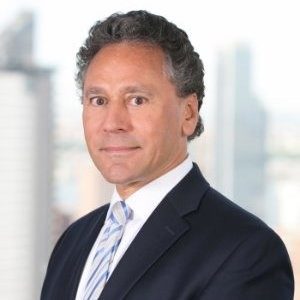
Event overview
Download the paper here:
For the second year in a row, Dynamo partnered with Credit Suisse to produce a cleantech innovation paper. This paper launch event highlighted the best and brightest in 2021 cleantech innovation; the event, comprised of a thought leadership discussion and cleantech panel, featured leaders from across the energy ecosystem who covereed key advancements and trends in the industry.
Recap:
For the second year in a row, Dynamo partnered with Credit Suisse to produce a cleantech innovation paper, spotlighting the cutting-edge technology and leading cleantech pioneers in the energy transition. The paper is a testament to how cleantechs are driving significant energy innovations required to achieve carbon neutrality targets.
Dynamo and Credit Suisse co-hosted an event, coinciding with COP26, to officially launch the 2021 Cleantech Innovation Paper. The event covered a range of topics from the political and economic incentives accelerating the commercialization of cleantech technologies to the supportive measures that need to be implemented to expand cleantech adoption.

The event began with remarks from Rob Santangelo, Global Co-Head of Energy & Infrastructure at Credit Suisse, who provided the key themes from the 2021 Cleantech Innovation Paper:
“This year’s cleantech innovation paper focused on the collaboration between governments and corporates and how that is shaping the cleantech landscape, the significance of COP26, the changing access to financing for startups, and how we can help drive innovation through capital needed to meet climate goals.” — Rob Santangelo, Global Co-Head of Energy & Infrastructure at Credit Suisse
Given a major focus of COP26 is the mobilization of finance, Danielle Johnson, Head of Venture Capital Coverage at Credit Suisse provided an overview on the acceleration in investment over the past few years, especially as corporates position themselves for a net zero footprint. This recent capital increase, however, is nowhere close to what’s required to achieve global emissions goals.
“$100 to $150 trillion of cleantech investment is required over the next 30 years to meet UN net zero 2050 targets. Broken down, that means we’ll need 4 trillion dollars per year to reach global goals as compared to the $600 billion over the last six years that we’ve just witnessed. While it’s encouraging to see the record pace of investment over the past couple of quarters, it’s clear that more capital is still needed.” — Danielle Johnson, Head of Venture Capital Coverage at Credit Suisse
Despite the financial gap, the increase in capital is groundbreaking and critically important. To realize our goals, we must clarify what catalyzed the financial surge and seek to understand what is necessary to sustain and amplify key investments.
After Santangelo and Johnson outlined the financial investment landscape, the event transitioned to a thought leadership discussion between Whitney Herndon, Associate Director at Rhodium Group, and Luke Bolar, Managing Director of External Affairs at ClearPath, who dove into the policy and economic trends underpinning cleantech innovation.
There was no better person to moderate the discussion than Emily Chasan, Director of Communications at Generate Capital. Chasan initiated the conversation by emphasizing clean and climate technology is vastly different from previous technological advancements in that successfully deploying clean energy technology requires extensive collaboration across stakeholders.
“Cleantech innovation is significantly different from software innovation; it requires involvement from and collaboration between various stakeholders such as local communities and towns, technology companies, policy experts, innovators, and investors.” — Emily Chasan, Director of Communications at Generate Capital

Chasan turned the floor over to Herndon who explained the policy and economic trends underpinning cleantech innovation.
Herndon noted how the combination of the IPCC 5-degree report, which catalyzed the international community around net zero targets, along with private sector support of corporations reaching net zero, shifted the momentum towards more actively working to decarbonize.
Notably, for the first time there’s broad consensus on collective climate targets and agreement to create a systemic shift. Yet to be determined are the public and private sectors’ detailed roadmaps. While goals may be similar, the strategies and tactics are not quite fully aligned.
Given policy’s fundamental role in building the physical infrastructure, Chasan brought Bolar into the conversation to comment on how public and private entities can work together and how the current U.S. political climate is shaping climate tech investments.
Bolar underscored collaboration between private and public sector is vital. The federal government can stimulate cleantech innovation by funding technology demonstrations, while the private sector can commercialize the technologies needed for decarbonization.
“Federal incentives provide an opportunity to make new, innovative technologies market competitive. The private sector can then step in to adopt those technologies and help scale them commercially.” — Luke Bolar, Managing Director of External Affairs at ClearPath
In regards to the political climate, Bolar indicated how there’s favorable bipartisan support for federal investment in both early-stage and applied research and development. Government tax incentives and tax credits will certainly contribute to the $4 trillion required to fund decarbonization from 2026 onward, as neither the public nor private sector will arrive at this total alone; therefore, unlocking and advancing technologies from the lab to the market necessitates funding from various sources.
Herndon noted while some technologies are making it to the commercialization space, policy mechanisms are incredibly important to help close the gap between projects still in the demonstration phase to commercialization.
“Emerging clean technologies are trying to solve for systemic problems, which means we need to triage and prioritize which technologies are the most valuable and impactful in this systemic transformation. But as we weigh cost-benefits and answer pertinent questions surrounding risks and the technology’s role in the clean energy ecosystem, it’s important to note that the market cannot do all of this alone. We need policy support for both decarbonization overall and to help incentivize emerging clean technologies.” — Whitney Herndon, Associate Director at Rhodium Group
The event then moved to the panel discussion with four of the 2021 Cleantech Innovation Paper featured cleantech companies including:
- Rachel Rosen, President, CEO & Co-Founder of WexEnergy
- Lincoln Payton, CEO of ClearTrace
- Tanguy Serra, President and CFO at GoodLeap
- Keith Kinch, Co-Founder and General Manager at BlocPower
The participating cleantechs are prime examples of deployed technology within the market that’s substantially contributing to achieving climate goals.

Panel moderator, Kristin Barbato, Co-Founder & President at Dynamo Energy Hub, kicked off the conversation by inquiring about the role cleantechs play in the clean energy transition.
Kinch voiced cleantechs bridge the public and private sector gap, which ultimately creates vital partnerships and instills trust within communities. Payton indicated even though climate change is undoubtedly a massive equation to solve, cleantechs pushing innovation barriers sparks imperative advancements. Rosen stated how cleantechs are essential as they’re uniquely situated to leverage both their positive environmental and community impacts.
“Climate change and reducing our carbon footprint is a global problem, but it needs local solutions.” — Rachel Rosen, President, CEO & Co-Founder of WexEnergy
Rosen also expressed how within the clean energy transition there must be collaboration between software and hardware, and cleantechs are bringing hardware to the table. While software can enhance or make hardware more efficient, software alone will not make us more efficient if we’re still emitting carbon. Barbato added to this point by articulating:
“The clean energy transition will only be as successful as the software and hardware solutions are able to work together, and the software solutions are only as valuable as the hardware solutions are operable and effective.” — Kristin Barbato, Co-Founder & President at Dynamo Energy Hub
Barbato posed the question of how COVID transformed companies and influenced the energy transition.
Payton commented that COVID did two things: it proved we can collectively change behavior when necessary and brought a macrolevel issue directly into people’s purview. He phrased it best when he declared:
“Just as COVID has shown us that we can quickly adapt and shift our priorities when faced with a global crisis, we’ve seen an explosion of cutting-edge solutions in cleantech that have provided us with the tools we need to battle climate change. But, in order to know if the biggest carbon contributors are also adapting to meet the challenge, we need uniform carbon accounting standards, precise measurement, and transparent practices.” — Lincoln Payton, CEO of ClearTrace
Kinch stated how this past year changed our ability to scale quickly, as expectations around engineering and financing drastically shifted to meet demand and timelines. Kinch also mentioned that the narrative around health and safety has changed, as conversations and questions now center around welfare and equality more than pre COVID times.
Serra commented how the biggest impact of the COVID crisis was that investments in clean energy became even more attractive. Renewable energy effectively replaces the operating expense of burning fossil fuels day-to-day with a capital expenditure, such as solar panels or energy efficient windows, to be used over the long-term. In today’s inflationary world, created by money being printed and injected into the economy in response to the pandemic, replacing opex with capex is incredibly attractive, said Serra. As energy prices rise in an inflationary scenario, the payback for a 20- to 30-year clean energy investment becomes much shorter — creating even greater incentive to transition to clean energy resources.
Barbato concluded the panel with a rapid-fire round and asked each of the panelists a topic specific to their expertise.
Rosen explained why more building owners aren’t looking at building envelopes for energy savings by noting that historically, accountants and teams weren’t measuring the true cost of a building’s efficiency and overlooking how poorly performing buildings could benefit from envelopes.
Barbato asked Serra where the increased investment in cleantechs stemmed from and how to grow this momentum in a productive manner.
Serra stressed how not all cleantech investment capital is the same, as there is a substantial difference between deployment dollars and equity dollars. He emphasized that equity dollars, primarily in the form of venture capital investments, tend to follow the macrotrends and see money flowing naturally into the clean energy sector. The real area of focus is on the deployment dollars. The clean energy transition will require roughly $10 trillion dollars of investment in the U.S. In order to attract more capital, clean energy technologies must be seen as attractive propositions to investors, which involves underscoring that these investments are low volatility.
“Previous energy revolutions have involved high volatility investments, as commodity prices fluctuate up and down. Renewable energy is a low volatility investment that deserves low capital cost long term. Fixed income investors have done the work to understand the quality of these assets and are now investing heavily in the space.” — Tanguy Serra, President and CFO at GoodLeap
Payton expressed why metrics are important in the energy transition by noting how metrics and measurement are key to allow for transparency and accountability. Proving results through metrics will assure there is no greenwashing as corporations set, analyze, and audit their targets.
Barbato posed a question to Kinch around what makes for a good collaboration and how can cleantechs execute these collaborations well. Kinch noted collaboration is community driven by stating:
“Cleantech projects are the most impactful when you take a community data driven approach. You have to understand what’s occurring on the ground locally, meet people where they’re at, and build trust and partnerships to scale up successfully.” — Keith Kinch, Co-Founder and General Manager at BlocPower
Collaboration and partnerships among the clean energy transition was a prominent theme woven throughout the 2021 Cleantech Innovation Paper Launch event. Looking at siloed aspects of the clean energy transition is no longer sufficient. Cleantechs are the bridge to clean energy solutions — fusing the vital roles of government, policy and regulation, private sector, consumption, software, and hardware.
Here at Dynamo, we are helping to forge those bridges through our vast network and foster vital partnerships to allow key stakeholders the shared space to collaborate on solving the industry’s toughest challenges. This year’s Cleantech Innovation Paper and launch event reiterated cleantech’s vital role in achieving 2050 carbon neutrality targets as a central component of the clean energy ecosystem. You can find the full event recording here and a downloadable version of the 2021 Cleantech Innovation Paper here.
Speakers included:
 Kristin Barbato, Co-Founder & President at Dynamo Energy Hub
Kristin Barbato, Co-Founder & President at Dynamo Energy Hub
Kristin Barbato has 25 years in energy and sustainability spanning utilities, government, and energy services, and now leverages this experience successfully as an entrepreneur. She founded Build Edison to accelerate commercialization of innovative energy solutions and as Co-founder and President of Dynamo Energy Hub, she is creating the new platform to connect energy transition leaders and innovators across the world. Kristin previously served as the Chief Energy Management Officer at the City of New York, the largest municipal energy operation in the US, VP of Customer Energy Solutions at NYPA, and other utility and corporate executive roles.
Rachel Rosen, President, CEO & Co-Founder of WexEnergy

Rachel often introduces herself as a recovering landlord, having spent over 27 years managing millions of square feet of commercial and multifamily properties. Her real estate background makes her the ideal person to lead WexEnergy’s marketing and sales and shape the company’s strategic direction.
At the outset of the Covid pandemic, Rachel made the difficult decision to pause sales. Instead, WexEnergy turned its attention towards developing utility incentives for WindowSkin® and accelerating market introduction of SolarSkinTM, a product that reduces solar heat gain to WindowSkin’s insulation gap.
The Rochester (NY) Business Journal is honoring Rachel as “Executive of the Year” for Technology and Manufacturing Companies. Ms. Rosen has worked with WexEnergy since its inception. She joined WexEnergy as President & CEO in 2017.
Emily Chasan, Director of Communications at Generate Capital

Emily Chasan is director of communications for Generate Capital. She is responsible for external and internal communications, marketing, events and developing communications strategies that advance the sustainable infrastructure company’s mission to build for a more sustainable world. With over 2,000 infrastructure assets in operation today, Generate is a long-term investment and operating platform that scales affordable, reliable, and sustainable infrastructure in green power, mobility, smart cities, waste and water. Emily is also a contributing editor for GreenBiz Group’s GreenFin platform and a co-host of The Energy Gang podcast.
Prior to Generate, Emily was sustainable finance editor at Bloomberg News, where she pioneered the news organization’s coverage of ESG, sustainability and impact investing. Emily wrote and edited Bloomberg Green’s weekly Good Business newsletter on the frontiers of sustainable and responsible investing. Recognized as a leading voice on green finance, she is a regular speaker at ESG conferences and events.
An award-winning journalist, Emily was previously a senior editor at The Wall Street Journal’s CFO Journal, and a senior correspondent at Reuters where she covered accounting, law, hedge funds, manufacturing, and the U.S. stock market. She led the wire service’s team of bankruptcy reporters during the financial crisis from 2008 to 2010.
Emily started her career as an intern in The Wall Street Journal’s Dallas bureau. She graduated from Tufts University cum laude with degrees in economics and international relations.
Whitney Herndon, Associate Director at Rhodium Group
 Whitney Herndon is an Associate Director at Rhodium Group and manages the firm’s US energy research.
Whitney Herndon is an Associate Director at Rhodium Group and manages the firm’s US energy research.
Whitney manages a team of analysts that use a range of energy and economic models to analyze the impact of policy proposals and market shifts on the US energy system and macroeconomy. Her expertise includes carbon capture, energy and electric power systems modeling, and economy-wide decarbonization.
Whitney has a Bachelor’s degree in Environmental Systems and Molecular Biology from the University of California, San Diego and a Master’s of Environmental Management with a concentration in Energy Economics from Duke University.
Luke Bolar, Managing Director of External Affairs at ClearPath

Luke Bolar is the Managing Director of External Affairs at ClearPath where he leads external relations and communications. Before joining ClearPath, Luke worked at Edelman as Senior Vice President of the energy and environment practice leading communications strategy and public affairs campaigns for energy companies, trade associations and government entities. Luke also worked for more than a decade on Capitol Hill where he served as Chief of Staff and Communications Director, working in both the U.S. House and Senate for multiple Members and Committees.
Lincoln Payton, CEO of ClearTrace
 Lincoln Payton is Chief Executive Officer and board member at ClearTrace. Experienced in domestic and international corporate finance, principal investing, risk management, and leadership roles on three continents, Lincoln brings extensive expertise to his role at ClearTrace. His background includes building global businesses across financial products in the energy industry across the Americas and Europe.
Lincoln Payton is Chief Executive Officer and board member at ClearTrace. Experienced in domestic and international corporate finance, principal investing, risk management, and leadership roles on three continents, Lincoln brings extensive expertise to his role at ClearTrace. His background includes building global businesses across financial products in the energy industry across the Americas and Europe.

Tanguy Serra, President and CFO at GoodLeap
Tanguy Serra is the President and Chief Financial Officer at GoodLeap. He oversees GoodLeap’s overall financial activities, including capital markets, financial planning, and strategic investor partnerships. Tanguy left TPG Capital in 2010 to launch Vivint Solar, where he personally installed Vivint’s first rooftop solar system in Utah and helped scale Vivint into the second largest residential solar provider in the U.S. In 2013, Tanguy was appointed COO of Solar City, where he helped the company become the largest residential solar provider in the world prior to its acquisition by Tesla.
In addition, Tanguy is co-founder and Chief Investment Officer at GoodFinch, an ESG investment management platform uniquely focused on home-efficiency fixed income securities that benefit the planet, while delivering high-performance assets to investors.
Keith Kinch, Co-founder and General Manager at BlocPower
 Keith Kinch serves as General Manager and co-founder at BlocPower. Keith received his undergraduate degree at John Jay College and his graduate degree at American International University. He spent eight years as a community organizer, and two years as Deputy Field Director in New York State for the Democratic National Committee under President Obama’s grassroots arm Organizing for America. He helped advance key pieces of legislation such as the Affordable Healthcare Act.
Keith Kinch serves as General Manager and co-founder at BlocPower. Keith received his undergraduate degree at John Jay College and his graduate degree at American International University. He spent eight years as a community organizer, and two years as Deputy Field Director in New York State for the Democratic National Committee under President Obama’s grassroots arm Organizing for America. He helped advance key pieces of legislation such as the Affordable Healthcare Act.
In the summer of 2016, Keith led the Solarize Brownsville campaign where more than 200 homes were outfitted with solar panels. Solarize Brownsville brought together community partners, local residents, and the selected solar installer to successfully demonstrate that solar power can make an impact in low-to-moderate-income communities. It still stands as one of the largest solar projects in New York State history. In 2017 Keith led the partnership with the Mayor’s Office of Sustainability, and Department of Housing Preservation and Development on Community Retrofit NYC program to produce over 500 retrofits for 5-50 unit multi-family buildings in Con Edison’s Brooklyn Queens Demand Management zone. The project has won a national award and was completed one year ahead of schedule.. In 2019 BlocPower partnered with Con Edison and NYSERDA to launch “Green the Bronx,” a campaign to help hundreds of multifamily building owners in the Bronx convert their fossil fuel heating systems to clean heating & cooling systems. As part of the partnership, Con Edison, NYSERDA and BlocPower will provide engineering, project management, customer education, financing, and no money down equipment leases for building owners. Keith currently resides with his wife and two children in New York.
 Rob Santangelo, Global Co-Head of Energy & Infrastructure at Credit Suisse
Rob Santangelo, Global Co-Head of Energy & Infrastructure at Credit Suisse
Robert Santangelo is a Managing Director of Credit Suisse in the Investment Banking division, based in New York. He is the Co-Head of Energy & Infrastructure and Vice Chairman of Equity Capital Markets Origination. Previously, Mr. Santangelo served as Global Head of ECM Origination. Rob joined Credit Suisse in 2007 from Bank of America where he was a Managing Director in Equity Capital Markets. Rob began his career as an attorney with Sullivan & Cromwell. Rob received a Bachelor’s degree from Duke University and a J.D. from Harvard Law School.
 Danielle Johnson, Head of Venture Capital Coverage at Credit Suisse
Danielle Johnson, Head of Venture Capital Coverage at Credit Suisse
Danielle Johnson is a Managing Director of Credit Suisse leading Venture Capital coverage out of New York. She was previously Co-Head of the Americas Equities Business and a member of the Global Equities Management Committee and Global Markets Operating Committee. She has also spent time on client strategy within the Credit Suisse Key Account Management team serving as a Digital Champion and Global Markets Innovation Committee member.
Danielle joined Credit Suisse in June 2019 following a 21-year career with Goldman Sachs, where she most recently served as a Managing Director in their Global Client Relationship Management and Strategy team. Previously, Danielle held various positions including Co-Head of NY Institutional Sales, and also within Derivative Sales and various Cross Asset Desks. She was intimately involved with the Goldman Sachs Women’s Network throughout her career.
Danielle earned a BA in Government from Dartmouth College and serves on the Point O’Woods Foundation Board, Point O’Woods Investment Committee and Point O’Woods Arts Committee. Previous board work includes her alma mater, the Professional Children’s School in Manhattan and Friends of Pelham Sports in her community. She continues to serve as an alumni interviewer and class agent for the Dartmouth College Fund. She lives in Westchester County with her husband and two teenage boys.
2021 Cleantech Innovation Paper Launch
Wednesday, November 10 2021 - Wednesday, November 10 2021
10:00 AM EST
Zoom

2021 Cleantech Innovation Paper Launch


